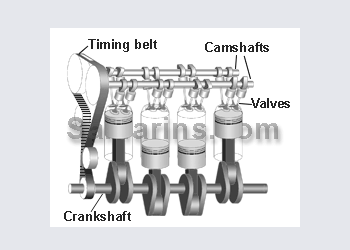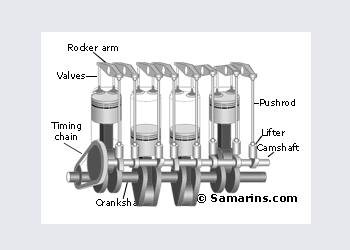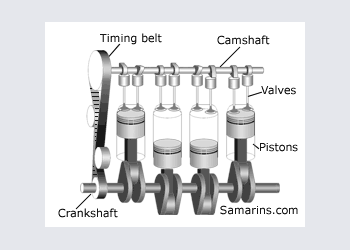OHV, OHC, SOHC and DOHC (twin cam) engine design
Automotive illustrated glossary
OHV engine design
OHV means OverHead Valve - an engine design where the camshaft is installed inside the engine block and valves are operated through lifters, pushrods and rocker arms (an OHV engine also known as "Pushrod" engine). Although an OHV design is a bit outdated, it has been successfully used for decades. An OHV engine is very simple, has more compact size and proven to be durable. |
OHC or SOHC engine
OHC in general means OverHead Cam while SOHC means Single OverHead Cam. |
DOHC or Twin cam engine
 4-cylinder 16 valves DOHC engine |
DOHC or Double OverHead Cam - the setup used in many today's cars. Since it's possible to install multiple valves per cylinder and place intake valves on the opposite side from exhaust vales, DOHC engine can "breath" better meaning that it can produce more horsepowers with smaller engine volume. Compare: The 3.5-liter V6 DOHC engine of 2003 Nissan Pathfinder has 240 hp, similar to 245 hp of the 5.9-liter V8 OHV engine of 2003 Dodge Durango.
Pros: High efficiency, possible to install multiple valves per cylinder and adopt variable timing.
Cons: More complex and more expensive design.



.jpg)


















No comments:
Post a Comment